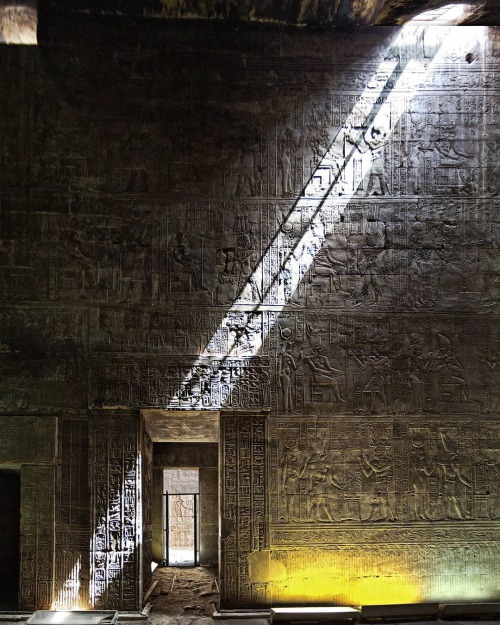Interview Episode!

interview episode!
More Posts from S-afshar and Others

Wall painting from a Christian church, Qocho (Gaochang), 683–770 CE. The murals from the Christian temple at Qocho (German: Wandbilder aus einem christlichen Tempel, Chotscho) consist of three fragments from Church of the East wall paintings—Palm Sunday, Repentance, and Entry into Jerusalem. These were discovered by the German Turpan expedition in the early 20th century, led by archaeologists Albert Grünwedel and Albert von Le Coq.
Dating from the 7th to 9th centuries, the murals originated in a now-ruined Church of the East structure in Qocho, an ancient oasis city in Chinese Turkestan—modern-day Xinjiang, China—which once served as the capital of the Uyghur Kingdom of Qocho. The original Entry into Jerusalem mural has been lost; only a line drawing made by Grünwedel survives. Today, the surviving murals are housed in the Museum of Asian Art in Dahlem, Berlin.

Nubianization of the Cushites, Linguistic Denigration of Berbers, Denial of Hamitic Identity
Nubianization of the Cushites, Linguistic Denigration of Berbers, Denial of Hamitic Identity: the Next Genocide in Africa
By Prof. Muhammad Shamsaddin Megalommatis
Speaking at the 5th Annual Conference of the Network of Oromo Studies (NOS), which took place on 27th February 2021 on Visual Technology, I exposed one more Western colonial distortion, falsification and machination; the title of my speech was: "Fake Nubia: a Colonial Forgery to deprive Cushitic Nations from National Independence, Historical Identity and Cultural Heritage".
The text of my contribution was published without the notes here:

I herewith publish the first two notes of my speech; they constitute a brief but direct denunciation of the major Western anti-African forgeries, namely
- the Nubianization of the East African Cushites and of their historical past and heritage,
- the disparagement of the Berbers, and
- the denial of the existence of the Hamites.

Although short, this text provides readers with a comprehensive insight into the evil, racist and systematic efforts of distortion of the African past by the Anglo-French and the American criminal fraudsters and biased pseudo-academics.
-----------------------------------------
Read and download the 3000-word text here:

and


Being powerful is like being a lady. If you have to tell people you are, you aren’t.
- Margaret Thatcher

Ghaznavid sultan Mahmud (r. 998-1030 CE) and his forces attacking the fortress of Zaranj in 1003 CE. Jami al-Tawarikh, 1314 CE. Jāmiʿ al-Tawārīkh (lit. 'The Compendium of Chronicles') is a work of literature and history, produced in the Mongol Ilkhanate. Written by Rashid al-Din Hamadani (1247–1318 CE) at the start of the 14th century, the breadth of coverage of the work has caused it to be called "the first world history". It was in three volumes and published in Arabic and Persian versions.




January 26 1988 - Burnum Burnum plants the Aboriginal flag at the cliffs of Dover, claiming England for the Aboriginal peoples of Australia, exactly 200 years after Arthur Phillip claimed Australia for the British. [video] The full Burnum Burnum Declaration:
I, Burnum Burnum, being a nobleman of ancient Australia, do hereby take possession of England on behalf of the Aboriginal people. In claiming this colonial outpost, we wish no harm to you natives, but assure you that we are here to bring you good manners, refinement and an opportunity to make a Koompartoo - ‘a fresh start’. Henceforth, an Aboriginal face shall appear on your coins and stamps to signify our sovereignty over this domain. For the more advanced, we bring the complex language of the Pitjantjajara; we will teach you how to have a spiritual relationship with the Earth and show you how to get bush tucker.
We do not intend to souvenir, pickle and preserve the heads of 2000 of your people, nor to publicly display the skeletal remains of your Royal Highness, as was done to our Queen Truganinni for 80 years. Neither do we intend to poison your water holes, lace your flour with strychnine or introduce you to highly toxic drugs. Based on our 50,000 year heritage, we acknowledge the need to preserve the Caucasian race as of interest to antiquity, although we may be inclined to conduct experiments by measuring the size of your skulls for levels of intelligence. We pledge not to sterilize your women, nor to separate your children from their families. We give an absolute undertaking that you shall not be placed onto the mentality of government handouts for the next five generations but you will enjoy the full benefits of Aboriginal equality. At the end of two hundred years, we will make a treaty to validate occupation by peaceful means and not by conquest.
Finally, we solemnly promise not to make a quarry of England and export your valuable minerals back to the old country Australia, and we vow never to destroy three-quarters of your trees, but to encourage Earth Repair Action to unite people, communities, religions and nations in a common, productive, peaceful purpose.
Burnum Burnum

Wall of the Temple of Horus in Edfu, built by the Ptolemids between 237 and 57 BCE.

Fragment from the Tomb of the Dancers
Second Intermediate Period, 17th Dynasty, c. 1630-1550 B.C. From Dra’ Abu el-Naga’. Now in the Ashmolean Museum, Oxford. AN1958.145
Read more

The Seine at Asnieres (1879) by Pierre-Auguste Renoir
HISTORY OF ACHAEMENID IRAN
Tentative diagram of the 40-hour seminar
(in 80 parts of 30 minutes)
Prof. Muhammad Shamsaddin Megalommatis
Tuesday, 27 December 2022
--------------------------
To watch the videos, click here:
https://www.patreon.com/posts/history-of-iran-76436584
To hear the audio, click here:

-------------------------------------------

1 A - Achaemenid beginnings I A
Introduction; Iranian Achaemenid historiography; Problems of historiography continuity; Iranian posterior historiography; foreign historiography
1 B - Achaemenid beginnings I B
Western Orientalist historiography; early sources of Iranian History; Prehistory in the Iranian plateau and Mesopotamia
2 A - Achaemenid beginnings II A
Brief Diagram of the History of the Mesopotamian kingdoms and Empires down to Shalmaneser III (859-824 BCE) – with focus on relations with Zagros Mountains and the Iranian plateau
2 B - Achaemenid beginnings II B
The Neo-Assyrian Empire from Shalmaneser III (859-824 BCE) to Sargon of Assyria (722-705 BCE) – with focus on relations with Zagros Mountains and the Iranian plateau
3 A - Achaemenid beginnings III A
From Sennacherib (705-681 BCE) to Assurbanipal (669-625 BCE) to the end of Assyria (609 BCE) – with focus on relations with Zagros Mountains and the Iranian plateau
3 B - Achaemenid beginnings III B
The long shadow of the Mesopotamian Heritage: Assyria, Babylonia, Elam/Anshan, Kassites, Guti, Akkad, and Sumer / Religious conflicts of empires – Monotheism & Polytheism
4 A - Achaemenid beginnings IV A
The Sargonid dynasty and the Divine, Universal Empire – the Translatio Imperii
4 B - Achaemenid beginnings IV B
Assyrian Spirituality, Monotheism & Eschatology; the imperial concepts of Holy Land (vs. barbaric periphery) and Chosen People (vs. barbarians)
5 A - Achaemenid beginnings V A
The Medes from Deioces to Cyaxares & Astyages
The early Achaemenids (Achaemenes & the Teispids)
5 B - Achaemenid beginnings V B
- Why the 'Medes' and why the 'Persians'?
What enabled these nations to form empires?
6 A - Zoroaster A
Shamanism-Tengrism; the life of Zoroaster; Avesta and Zoroastrianism
6 B - Zoroaster B
Mithraism vs. Zoroastrianism; the historical stages of Zoroaster's preaching and religion
7 A - Cyrus the Great (Cyrus II) I A
The end of Assyria, Nabonid Babylonia, and the Medes
7 B - Cyrus the Great (Cyrus II) I B
The Nabonidus Chronicle
8 A - Cyrus the Great (Cyrus II) II A
Cyrus' battles against the Medes
8 B - Cyrus the Great (Cyrus II) II B
Cyrus' battles against the Lydians
9 Α - Cyrus the Great (Cyrus II) III A
The Battle of Opis: the facts
9 Β - Cyrus the Great (Cyrus II) III B
Why Babylon fell without resistance
10 A - Cyrus the Great (Cyrus II) IV A
Cyrus Cylinder: text discovery and analysis
10 B - Cyrus the Great (Cyrus II) IV B
Cyrus Cylinder: historical continuity in Esagila
11 A - Cyrus the Great (Cyrus II) V A
Cyrus' Empire as continuation of the Neo-Assyrian Empire
11 B - Cyrus the Great (Cyrus II) V B
Cyrus' Empire and the dangers for Egypt
12 A - Cyrus the Great (Cyrus II) VI A
Death of Cyrus; Tomb at Pasargad
12 B - Cyrus the Great (Cyrus II) VI B
Posterity and worldwide importance of Cyrus the Great
13 A - Cambyses I A
Conquest of Egypt and Cush (Ethiopia: Sudan)
13 B - Cambyses I B
Iran as successor of Assyria in Egypt, and the grave implications of the Iranian conquest of Egypt
14 A - Cambyses II A
Cambyses' adamant monotheism, his clash with the Memphitic polytheists, and the falsehood diffused against him (from Egypt to Greece)
14 B - Cambyses II B
The reasons for the assassination of Cambyses
15 A - Darius the Great I A
The Mithraic Magi, Gaumata, and the usurpation of the Achaemenid throne
15 B - Darius the Great I B
Darius' ascension to the throne
16 A - Darius the Great II A
The Behistun inscription
16 B - Darius the Great II B
The Iranian Empire according to the Behistun inscription
17 A - Darius the Great III A
Military campaign in Egypt & the Suez Canal
17 B - Darius the Great III B
Babylonian revolt, campaign in the Indus Valley
18 A - Darius the Great IV A
Darius' Scythian and Balkan campaigns; Herodotus' fake stories
18 B - Darius the Great IV B
Anti-Iranian priests of Memphis and Egyptian rebels turning Greek traitors against the Oracle at Delphi, Ancient Greece's holiest shrine
19 A - Darius the Great V A
Administration of the Empire; economy & coinage
19 B - Darius the Great V B
World trade across lands, deserts and seas
20 A - Darius the Great VI A
Rejection of the Modern European fallacy of 'Classic' era and Classicism
20 B - Darius the Great VI B
Darius the Great as the end of the Ancient World and the beginning of the Late Antiquity (522 BCE – 622 CE)
21 A - Achaemenids, Zoroastrianism, Mithraism, and the Magi A
Avesta and the establishment of the ideal empire
21 B - Achaemenids, Zoroastrianism, Mithraism, and the Magi B
The ceaseless, internal strife that brought down the Xšāça (: Empire)
22 A - The Empire-Garden, Embodiment of the Paradise A
The inalienable Sargonid-Achaemenid continuity as the link between Cosmogony, Cosmology and Eschatology
22 B - The Empire-Garden, Embodiment of the Paradise B
The Garden, the Holy Tree, and the Empire
23 A - Xerxes the Great I A
Xerxes' rule; his upbringing and personality
23 B - Xerxes the Great I B
Xerxes' rule; his imperial education
24 A - Xerxes the Great II A
Imperial governance and military campaigns
24 B - Xerxes the Great II B
The Anti-Iranian complex of inferiority of the 'Greek' barbarians (the so-called 'Greco-Persian wars')
25 A - Parsa (Persepolis) A
The most magnificent capital of the pre-Islamic world
25 B - Parsa (Persepolis) B
Naqsh-e Rustam: the Achaemenid necropolis: the sanctity of the mountain; the Achaemenid-Sassanid continuity of cultural integrity and national identity
26 A - Iran & the Periphery A
Caucasus, Central Asia, Siberia, Tibet and China Hind (India), Bengal, Deccan and Yemen
26 B - Iran & the Periphery B
Sudan, Carthage and Rome
27 A - The Anti-Iranian rancor of the Egyptian Memphitic priests A
The real cause of the so-called 'Greco-Persian wars', and the use of the Greeks that the Egyptian Memphitic priests made
27 B - The Anti-Iranian rancor of the Egyptian Memphitic priests B
Battle of the Eurymedon River; Egypt and the Wars of the Delian League
28 A - Civilized Empire & Barbarian Republic A
The incomparable superiority of Iran opposite the chaotic periphery: the Divine Empire
28 B - Civilized Empire & Barbarian Republic B
Why the 'Greeks' and the Romans were unable to form a proper empire
29 A - Artaxerxes I (465-424 BCE) A
Revolt in Egypt; the 'Greeks' and their shame: they ran to Persepolis as suppliants
29 B - Artaxerxes I (465-424 BCE) B
Aramaeans and Jews in the Achaemenid Court
30 A - Interregnum (424-403 BCE) A
Xerxes II, Sogdianus, and Darius II
30 B - Interregnum (424-403 BCE) B
The Elephantine papyri and ostraca; Aramaeans, Jews, Phoenicians and Ionians
31 A - Artaxerxes II (405-359 BCE) & Artaxerxes III (359-338 BCE) A
Revolts instigated by the Memphitic priests of Egypt and the Mithraic subversion of the Empire
31 B - Artaxerxes II (405-359 BCE) & Artaxerxes III (359-338 BCE) B
Artaxerxes II's capitulation to the Magi and the unbalancing of the Empire / Cyrus the Younger
32 A - Artaxerxes IV & Darius III A
The decomposition of the Empire
32 B - Artaxerxes IV & Darius III B
Legendary historiography
33 A - Alexander's Invasion of Iran A
The military campaigns
33 B - Alexander's Invasion of Iran B
Alexander's voluntary Iranization/Orientalization
34 A - Alexander: absolute rejection of Ancient Greece A
The re-organization of Iran; the Oriental manners of Alexander, and his death
34 B - Alexander: absolute rejection of Ancient Greece B
The split of the Empire; the Epigones and the rise of the Orientalistic (not Hellenistic) world
35 A - Achaemenid Iran – Army A
Military History
35 B - Achaemenid Iran – Army B
Achaemenid empire, Sassanid militarism & Islamic Iranian epics and legends
36 A - Achaemenid Iran & East-West / North-South Trade A
The development of the trade between Egypt, Anatolia, Mesopotamia, Iran, Turan (Central Asia), Indus Valley, Deccan, Yemen, East Africa & China
36 B - Achaemenid Iran & East-West / North-South Trade B
East-West / North-South Trade and the increased importance of Mesopotamia and Egypt
37 A - Achaemenid Iran: Languages and scripts A
Old Achaemenid, Aramaic, Sabaean and the formation of other writing systems
37 B - Achaemenid Iran: Languages and scripts B
Aramaic as an international language
38 A - Achaemenid Iran: Religions A
Rise of a multicultural and multi-religious world
38 B - Achaemenid Iran: Religions B
Collapse of traditional religions; rise of religious syncretism
39 A - Achaemenid Iran: Art and Architecture A
Major archaeological sites of Achaemenid Iran
39 B - Achaemenid Iran: Art and Architecture B
The radiation of Iranian Art
40 A - Achaemenid Iran: Historical Importance A
The role of Iran in the interconnection between Asia and Africa
40 B - Achaemenid Iran: Historical Importance B
The role of Iran in the interconnection between Asia and Europe
--------------------------------------
Download the diagram here:

-
 s-afshar liked this · 2 years ago
s-afshar liked this · 2 years ago -
 s-afshar reblogged this · 2 years ago
s-afshar reblogged this · 2 years ago -
 deoxymoronic liked this · 2 years ago
deoxymoronic liked this · 2 years ago -
 shamashreshusur reblogged this · 2 years ago
shamashreshusur reblogged this · 2 years ago
